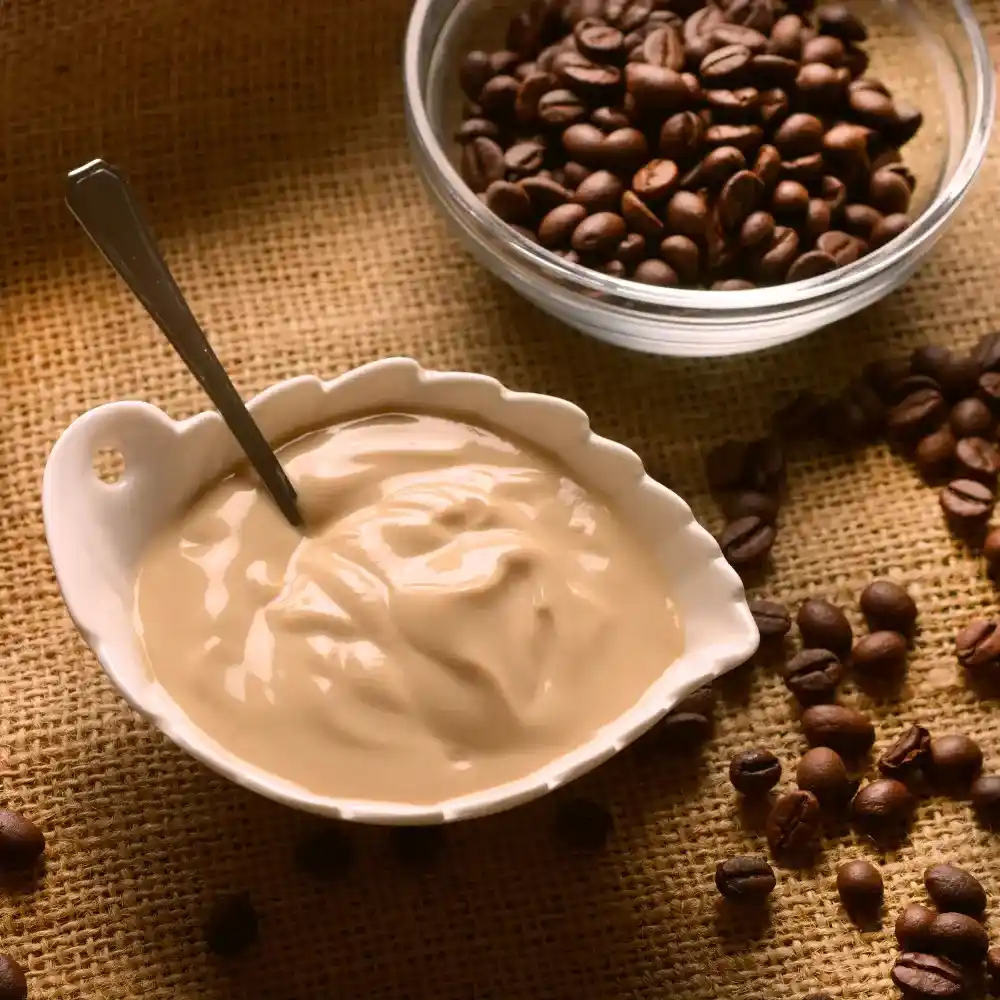The art of brewing the perfect cup of coffee has captivated minds for centuries. Each coffee bean is a complex world of flavors and chemistry, waiting to be unlocked. And at the heart of that complex chemistry are the tannins. Tannins in coffee have a significant impact on the taste, color, and even health properties of your daily brew. Despite their importance, tannins are often misunderstood or overlooked. In this article, we aim to shed light on these potent compounds, exploring their composition, behavior, and ultimately, their role in your cup of joe. So grab your favorite brew, sit back, and let us take you on an enlightening journey into the world of tannins in coffee.
Tannins in Coffee: Key Takeaway
- Tannins Impact Coffee Flavor and Body: Tannins, a type of polyphenol, play a significant role in the taste profile of coffee, contributing to its bitterness, astringency, and overall body.
- Tannins Have Health Implications: The presence of tannins in coffee has both positive and negative health implications. They possess antioxidant properties that could potentially protect against various diseases, but their over-consumption could interfere with iron absorption and cause stomach discomfort.
- Tannins Influence Coffee Production and Brewing: The level of tannins can vary depending on the coffee bean variety, brewing method, and roasting process. Factors like brewing time, temperature, and coffee-to-water ratio can impact tannin extraction.
- You Can Manipulate Tannins for a Tailored Coffee Experience: Understanding tannins allows you to manipulate them to suit your preferences. By controlling factors like water quality, coffee variety, and brewing techniques, you can achieve the desired level of tannins in your coffee.
- Myths About Tannins: Misconceptions about tannins often circulate in the coffee world. For instance, tannins and caffeine are different compounds, darker roast doesn’t necessarily mean more tannins, and while tannins contribute to bitterness, they are not the sole cause.
Understanding Tannins: The Science Behind the Taste
When you sip a cup of coffee, you’re not just enjoying a beverage; you’re embarking on a journey of complex chemistry that influences your taste experience. The unsung heroes of this journey are the tannins in coffee. They play a key role in coffee’s taste profile, but their contribution extends beyond just flavor.
The Chemistry of Tannins
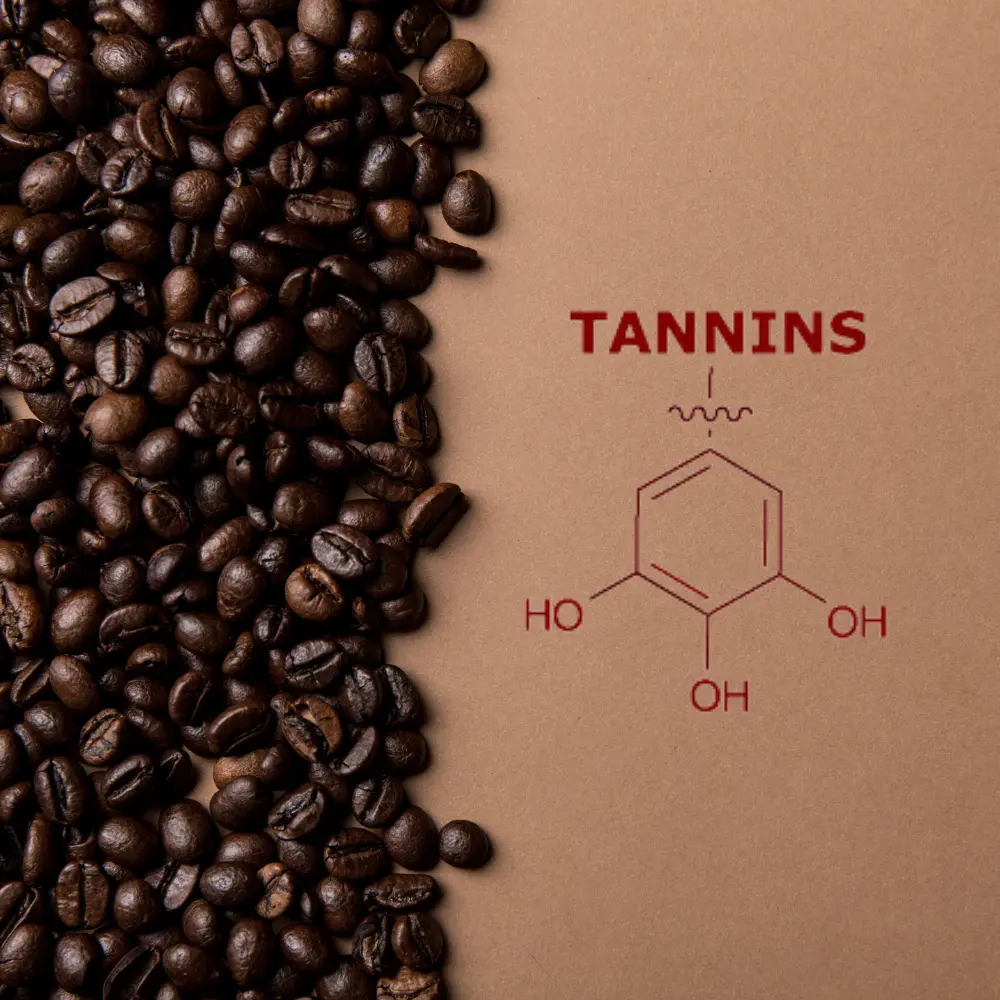
Tannins are a type of polyphenol, a large group of natural compounds found in many plants, including coffee. They are responsible for some of the bitterness and astringency you might associate with a strongly brewed cup of coffee. (1) There is one main type of tannins:
- Tannic Acid: one specific variety of tannins, or polyphenols, is tannic acid. The many phenol groups present the cause of its low acidity (pKa of about 6). By protein precipitation (n = 5, +/- SD), green coffee beans had 6.6 +/- 0.6 mg g-1 weight tannic acid equivalents, or 6.8 +/- 2.3 mg g-1 by spectrophotometry. For roasted coffee beans, the corresponding values were 18 +/- 1.7 and 17 +/- 2.7 mg g-1, respectively.
Understanding this type of tannin and how it functions allows us to appreciate the complexity of flavors in our coffee cups.
Tannins and the Taste Profile of Coffee

Tannins contribute significantly to the taste profile of your coffee. A well-balanced cup requires a delicate balance of tannins that provides complexity without overwhelming the taste buds.
- Bitterness: As mentioned before, condensed tannins are responsible for the bitter taste in coffee. They’re not the only source of bitterness, but they are significant contributors.
- Astringency: This is a dry, puckering sensation often mistaken for bitterness. It is mainly due to tannins interacting with salivary proteins and preventing saliva from lubricating the inside of the mouth.
- Balance: Tannins provide a counterpoint to the natural sweetness and acidity of coffee, creating a balanced and complex flavor profile.
To sum up, the tannins that are in coffee, while seemingly invisible, have a substantial impact on the taste of our beloved brew. Understanding their chemistry and how they influence the coffee experience allows us to appreciate and manipulate these elements for our perfect cup.
The Health Implications of Tannins in Coffee
Coffee isn’t just a beloved morning ritual or a source of quick energy – it’s also a complex beverage containing numerous compounds that can impact our health. Among these compounds are the tannins. While they’re crucial to coffee’s taste profile, tannins also have health implications that are worth considering.
Tannins and Antioxidant Properties

Perhaps the most noteworthy health benefit of tannins in coffee is their antioxidant properties. Antioxidants are molecules that can prevent or slow damage to cells caused by free radicals, unstable molecules that the body produces as a reaction to environmental and other pressures.
- Tannins belong to a broader group of plant compounds called polyphenols, which are well-known for their antioxidant effects.
- Studies have shown that tannins can neutralize harmful free radicals, thereby reducing inflammation and protecting against various diseases.
- The antioxidant property of tannins can contribute to the overall health benefits of coffee, which include a reduced risk of several conditions like heart disease and certain types of cancer.
Possible Side Effects of Tannins

Despite their health benefits, tannins can also have potential side effects, particularly when consumed in large amounts:
- Tannins can interfere with iron absorption. They bind to dietary iron, especially the non-heme iron found in plant foods, reducing the body’s ability to absorb it. (2)
- Some people may experience stomach discomfort or nausea from consuming high-tannin beverages like coffee.
- Tannins may contribute to the staining of teeth. These compounds can stick to the plaque on teeth, leading to a yellow or brown discoloration over time.
Tannins and the Digestive System

Tannins also interact with our digestive system in notable ways:
- They have an astringent property, which means they can constrict or shrink tissues. This property can cause a feeling of dryness in the mouth and can potentially affect the lining of the gastrointestinal tract.
- Some research suggests that tannins might have prebiotic-like properties, meaning they could potentially promote the growth of beneficial gut bacteria.
- They may also have an antimicrobial effect, inhibiting the growth of certain harmful bacteria in the digestive system.
The Role of Tannins in Coffee Production and Brewing
In addition to impacting the taste and health attributes of your coffee, tannins also play a vital role in the coffee production and brewing process. Their presence can vary depending on the coffee bean variety, brewing method, and roasting process. Let’s delve deeper into these aspects.
Tannins and Coffee Bean Varieties
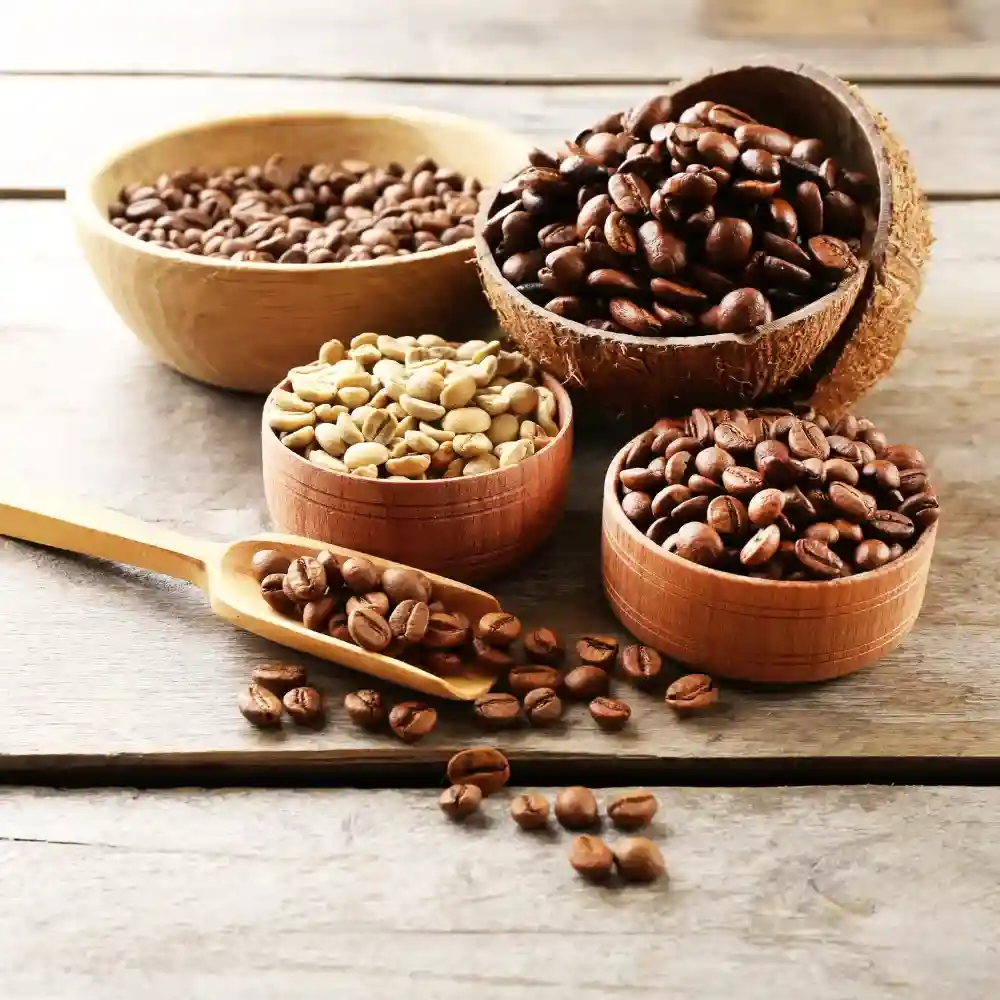
The type of coffee bean can influence the tannin content of your coffee. While it’s challenging to quantify exact amounts, it’s known that different varieties possess varying concentrations of tannins.
- Arabica and Robusta are the two primary types of coffee beans consumed worldwide. In general, Robusta tends to have higher tannin content than Arabica, which can contribute to its more bitter taste.
- Within these categories, specific varieties and even individual batches of beans can have different tannin levels, due to factors like growing conditions, soil composition, and altitude.
The Impact of Brewing Methods on Tannin Extraction

Brewing methods can significantly affect how much of the tannins in coffee beans make it into your cup. Key factors include the brewing time, temperature, and the coffee-to-water ratio.
- Brewing Time: The longer the coffee grounds are in contact with water, the more tannins are likely to be extracted. This means methods like French Press, which involve a longer steeping time, tend to extract more tannins than quick methods like espresso.
- Temperature: The hotter the water, the more tannins are likely to be extracted. However, if the water is too hot, it might over-extract the tannins, leading to a bitter and astringent cup.
- Coffee-to-water Ratio: A higher coffee-to-water ratio means more tannins are likely to be extracted. This is why a strong coffee can often feel more bitter and astringent.
Tannins and the Roasting Process
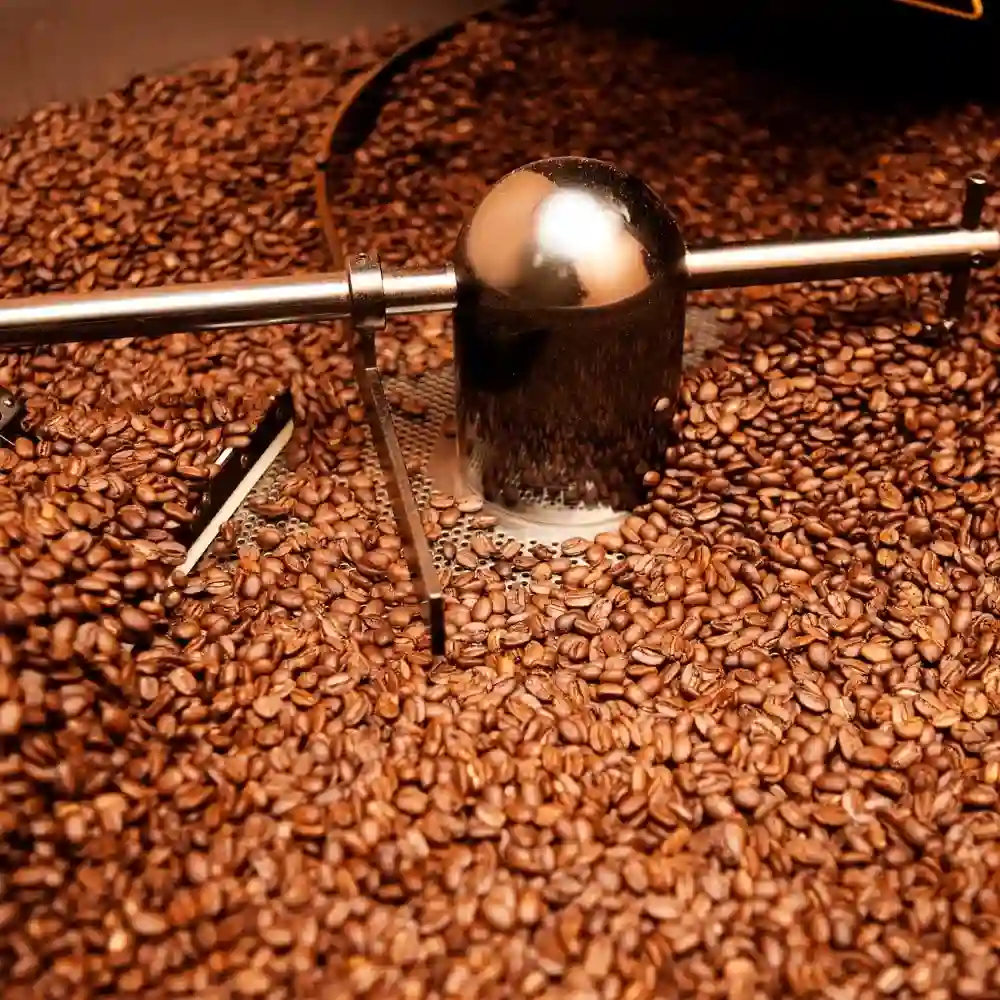
The roasting process is another critical factor influencing the tannin content in your coffee.
- The level of roast can change the profile of tannins in coffee. Generally, a darker roast will degrade more tannins, potentially reducing their overall content but enhancing certain flavor aspects.
- During roasting, complex reactions occur that can transform or break down the tannins, changing the flavor profile of the coffee.
- Roasting also reduces the astringency of the coffee by causing the tannins to form larger molecules that do not produce the same puckering sensation on the tongue.
Understanding the role of tannins in coffee production and brewing provides a powerful tool for controlling the taste and quality of your coffee. By selecting the right beans, brewing method, and roast level, you can manipulate tannins to create your perfect cup.
Manipulating Tannins for a Perfect Coffee Experience
We’ve explored the substantial influence of tannins in coffee on its taste, body, and even health impacts. But tannins aren’t merely a fixed factor in your cup of joe. As a home barista or coffee enthusiast, you have the power to manipulate tannins to create a coffee experience tailored to your preferences.
Choosing the Right Coffee Variety

The variety of coffee beans you select can have a major influence on the tannin content in your brew.
- If you enjoy a robust, full-bodied coffee with a bitter kick, opt for Robusta varieties, known for their higher tannin content.
- For a smoother, more balanced cup, consider Arabica varieties, which typically contain fewer tannins and offer a more nuanced flavor profile.
Remember, the specific growing conditions and processing methods of the coffee beans can also affect their tannin levels, so it’s worth experimenting with beans from different regions and farms.
Optimal Brewing Techniques for Tannin Control

Your brewing technique offers several opportunities to control tannin levels.
- Brewing Time: If you’re finding your coffee too bitter or astringent, try reducing the brewing time. A shorter contact time between the water and coffee grounds will extract fewer tannins.
- Coffee-to-Water Ratio: Using less coffee in relation to water can also reduce tannin extraction. Try experimenting with different ratios to find your preferred balance.
- Brewing Method: Certain brewing methods naturally extract more tannins. For example, espresso and French Press methods tend to extract a lot of tannins, while a pour-over or drip method might extract fewer.
Tannins and Coffee: Debunking Myths
In our journey through the world of tannins in coffee, we have now arrived at a crucial point – debunking common myths. Misconceptions about tannins abound, and these can obscure our understanding and enjoyment of coffee. Let’s clarify some of these myths.
The Truth About Tannins and Caffeine
One common myth is that tannins are synonymous with caffeine. It’s important to understand that tannins and caffeine are entirely different compounds with distinct properties.
- Tannins are a type of polyphenol that contributes to the taste, body, and antioxidant properties of coffee.
- Caffeine, on the other hand, is a stimulant that affects the central nervous system, making you feel more alert and energized.
Although both compounds coexist in your coffee, they perform different roles and have different impacts on your coffee experience and health. There’s no direct correlation between the tannin content and the caffeine content of your coffee.
Does Darker Coffee Mean More Tannins?

Another popular myth is that darker roasts contain more tannins. Contrary to this belief, the roasting process actually breaks down the tannins in coffee.
- During the roasting process, the heat causes complex reactions in the coffee beans, transforming or breaking down many compounds, including tannins.
- While a dark roast might taste stronger or more bitter, this is not necessarily due to an increase in tannins. Instead, it’s often because of other compounds that form during the roasting process.
Can Tannins Make Your Coffee Bitter?
Yes, tannins contribute to the bitterness of your coffee, but it’s a myth that they’re the only or even the primary cause of bitterness.
- While tannins do contribute to a bitter taste, other compounds, such as certain types of acids and burnt or over-extracted compounds, can also cause bitterness.
- Furthermore, tannins also contribute to astringency, a drying sensation in your mouth that is often mistaken for bitterness.
- The bitterness in your coffee is a complex interplay of various compounds, with tannins being just one part of the story.
Understanding the truth behind these myths can enhance your appreciation of coffee and its intricate flavors. Tannins play a multifaceted role in coffee, and demystifying them allows you to understand and enjoy your coffee on a whole new level.
Tannin Levels in Popular Drinks
While tannins are often associated with coffee, they can also be found in a wide range of popular beverages. The tannin levels in these drinks can vary significantly depending on factors like preparation methods and ingredients used. Below, we explore the tannin content in some popular beverages.
Coffee

As we’ve discussed extensively, coffee contains tannins, which contribute to its bitterness and astringency. The amount of tannins can vary depending on the coffee bean variety, roasting process, and brewing method. Darker roasts and longer brewing times generally lead to more tannins being extracted.
Tea

Tea is another tannin-rich beverage. The tannin content in tea can significantly vary based on the type of tea and how it’s brewed.
- Black Tea: Typically has the highest tannin content among teas. This is partly why black tea often has a robust, slightly bitter flavor.
- Green Tea: Contains fewer tannins than black tea, giving it a lighter and more subtle taste.
- White Tea: Generally has the lowest tannin content, which contributes to its delicate, subtle flavors.
The steeping time also impacts tannin extraction in tea – longer steeping times usually result in a more tannin-rich brew.
Wine

Tannins are also prominent in wine, especially red wine. They contribute to the wine’s complexity, longevity, and mouthfeel.
- Red Wine: Typically high in tannins due to the winemaking process, which involves fermenting the grape juice with its skins, seeds, and stems (parts of the grape rich in tannins).
- White Wine: Contains fewer tannins as it’s often made without prolonged contact with grape skins, seeds, and stems.
Cocoa and Chocolate Drinks
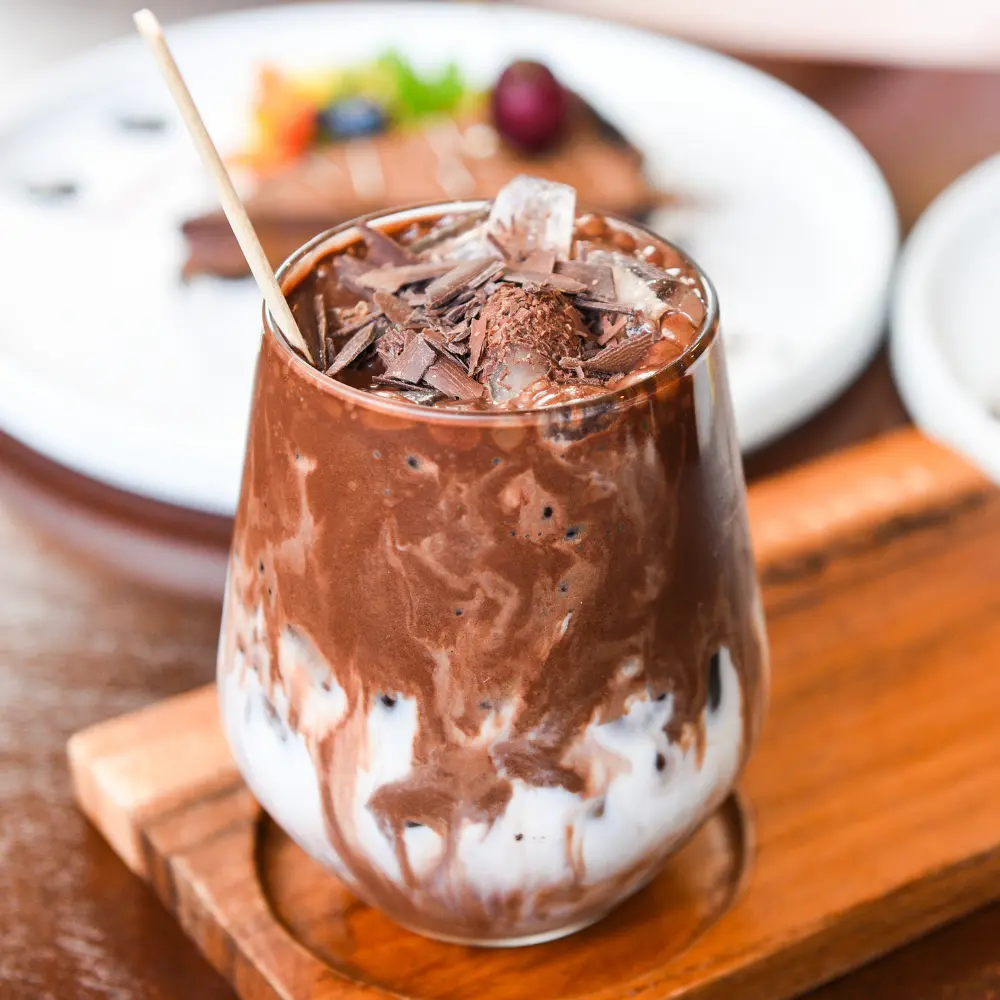
Cocoa, the main ingredient in chocolate drinks, is rich in tannins. These tannins give cocoa and dark chocolate their distinctive bitter and astringent flavor profiles. The tannin content in cocoa drinks can vary based on the cocoa’s origin and the preparation method.
Beer

Tannins can also be found in beer, albeit in lower concentrations than in coffee, tea, and wine. They contribute to the beer’s flavor, color, and mouthfeel.
- Ales and Stouts: Tend to have higher tannin content due to their brewing process and ingredient selection. The use of darker malts, which contain more tannins, and the prolonged boiling times during brewing, lead to more tannin extraction.
- Lagers and Pilsners: Usually have a lower tannin content as they are made with lighter malts and undergo a shorter boiling process.
In summary, tannins are not just found in coffee but are also present in various popular beverages like tea, wine, cocoa drinks, and beer. The tannin content in these drinks can vary widely based on several factors, from ingredients and brewing processes to steeping times and fermentation methods. Understanding the role of tannins in these beverages can help you appreciate their complexity and fine-tune your beverage selection to align with your taste preferences.
Conclusion
Tannins in coffee are indeed an intricate and essential part of our beloved beverage. They shape the taste, influence the body, and even impact the health properties of the coffee we drink daily. Our exploration of the tannin landscape has brought us from the scientific understanding of these compounds to their role in coffee production and brewing. We’ve also addressed the impact they have on our health and debunked common myths about them.
By manipulating factors like water quality, coffee bean variety, and brewing techniques, we can control tannin levels and create a coffee experience unique to our tastes and preferences. This understanding enhances our appreciation of coffee, deepening our connection to the cup we hold in our hands each morning.
In the end, whether you prefer a robust, tannin-rich coffee or a smoother, more balanced brew, understanding the role of tannins that are in coffee can help you make informed choices about what you drink and how you brew it. The world of coffee is as complex and rich as its flavor. Here’s to your journey in exploring it, one cup at a time.
FAQ
How can tannins impact your health?
Tannins possess antioxidant properties that could potentially protect against various diseases, but excessive intake can interfere with iron absorption and cause stomach discomfort.
How do tannins play a role in coffee production and brewing?
The tannin content in coffee can vary depending on the coffee bean variety, brewing method, and roasting process, influencing the coffee's taste and body.
How can we manipulate tannin levels to enhance our coffee experience?
By controlling factors like coffee variety, and brewing techniques, we can manipulate tannin levels to create a coffee experience tailored to our preferences.
What are some common myths about tannins in coffee?
Common myths include the assumption that tannins and caffeine are the same, that darker roasts contain more tannins, and that tannins are the sole cause of bitterness in coffee.




